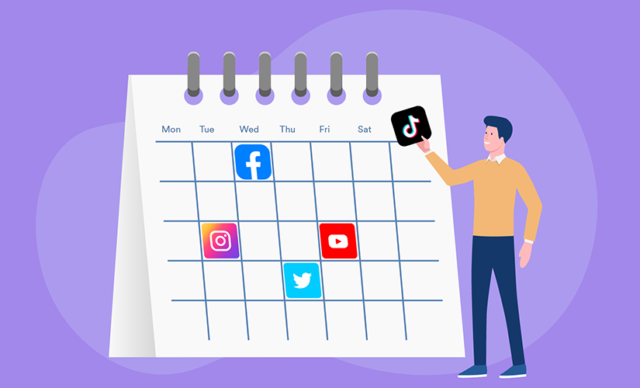Creating a content calendar is an essential step for businesses and individuals looking to streamline their content creation process. A well-structured content calendar not only helps you stay organized but also ensures that your content aligns with your marketing goals and resonates with your audience. In this blog, we will guide you through the steps to create an effective content calendar that enhances your content strategy.

Table of Contents
Toggle1. Define Your Goals
Before diving into the content calendar creation, it’s crucial to define your content marketing goals. Ask yourself the following questions:
- What do you want to achieve with your content? (e.g., brand awareness, lead generation, audience engagement)
- Who is your target audience?
- What key messages do you want to convey?
Having clear goals will guide your content creation process and help you measure success later on.
2. Choose Your Content Types
Content can take various forms, such as blog posts, videos, infographics, social media updates, podcasts, and more. Determine the types of content you want to create based on your audience’s preferences and your business objectives. A diverse mix of content types can keep your audience engaged and cater to different learning styles.
3. Determine Frequency and Timing
Establishing how often you want to publish content is vital for maintaining consistency. Consider the following:
- How many pieces of content can you realistically produce each week or month?
- Are there specific days or times when your audience is most active?
For example, you might decide to publish a blog post every Tuesday, post on social media three times a week, and send a monthly newsletter. Be realistic about your capacity to ensure you can stick to your schedule.
4. Select a Calendar Tool
There are several tools available for creating and managing a content calendar. Choose one that suits your needs, whether it’s a simple spreadsheet, a project management tool like Trello or Asana, or a dedicated content calendar software. The key is to select a tool that allows you to organize and visualize your content easily.
5. Outline Your Content Ideas
Brainstorm and outline your content ideas based on your goals, target audience, and chosen content types. Consider using the following methods for inspiration:
- Keyword research to identify popular topics in your industry
- Audience surveys to understand their interests and pain points
- Analyzing competitors’ content to spot gaps or opportunities
Create a list of potential topics that align with your audience’s needs and your brand’s messaging.
6. Assign Dates and Deadlines
Once you have a list of content ideas, assign specific publication dates to each piece. Be sure to consider any relevant events, holidays, or seasonal trends that may impact your content. Additionally, set deadlines for the different stages of the content creation process, including:
- Research
- Writing
- Editing
- Design (if applicable)
- Publishing
Setting deadlines will keep you on track and ensure timely delivery.
7. Collaborate and Assign Responsibilities
If you’re working with a team, it’s important to assign responsibilities for each piece of content. Clearly outline who is responsible for creating, editing, and publishing the content. Collaboration tools can facilitate communication and streamline the workflow, ensuring everyone is on the same page.
8. Include Relevant Details
Your content calendar should include key details for each content piece, such as:
- Title or topic
- Content type (e.g., blog post, social media update)
- Target audience
- Keywords or SEO considerations
- Call-to-action (CTA)
- Links or references to resources
- Visual elements or design requirements
Including these details will help you and your team stay organized and focused on the content’s objectives.
9. Monitor and Adjust
A content calendar is a living document that should be regularly reviewed and updated. Monitor the performance of your published content using analytics tools to measure engagement, traffic, and conversion rates. Based on this data, adjust your content strategy as needed, experimenting with different topics, formats, and publication frequencies.
10. Review and Plan Ahead
At the end of each month or quarter, take the time to review your content calendar and assess its effectiveness. What worked well? What didn’t? Use these insights to inform your planning for the upcoming months. Continuously refining your content calendar will enhance your content strategy and help you stay aligned with your goals.
Conclusion
Creating a content calendar is a valuable practice for anyone looking to enhance their content marketing efforts. By defining your goals, outlining content ideas, and organizing your publishing schedule, you can streamline your content creation process and ensure consistency. With the right tools and strategies in place, a content calendar will help you stay organized, engage your audience effectively, and achieve your marketing objectives. Start planning today, and watch your content strategy thrive!
4o mini


No responses yet